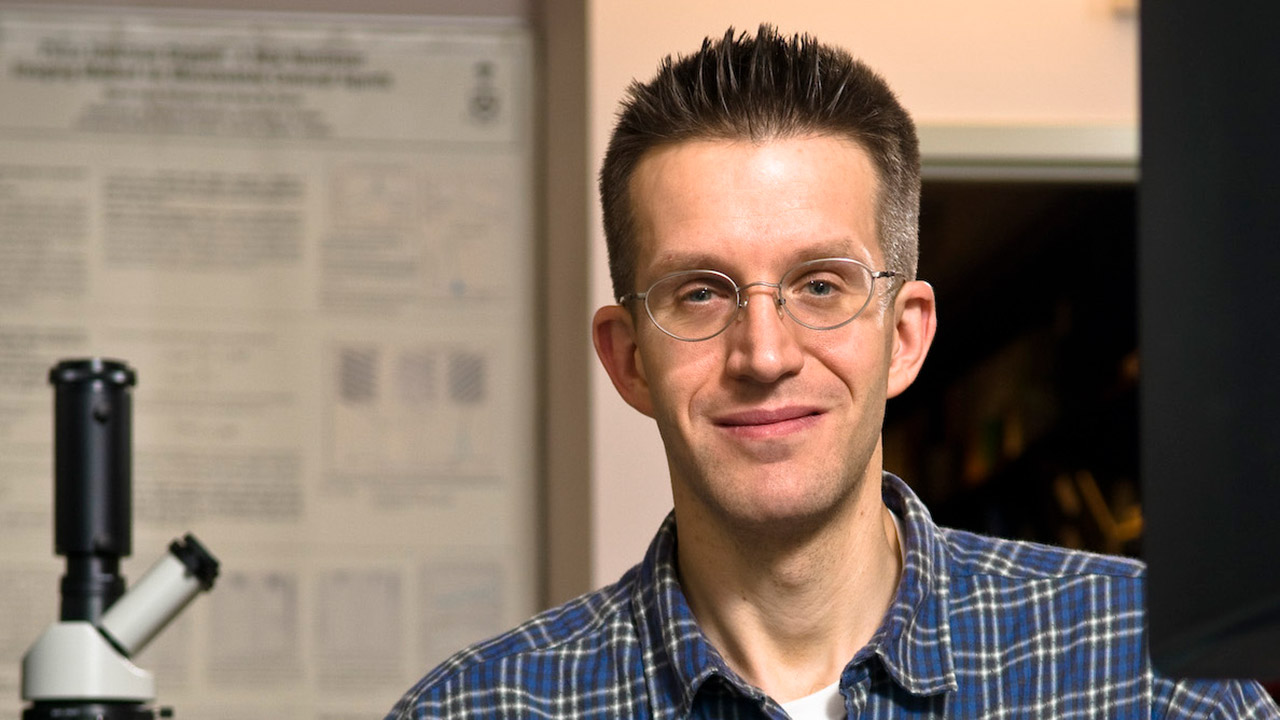Closing in on clinical impact
In Canada the number of new cancer cases is increasing, but so, too, are rates of survival. According to the Canadian Cancer Society, in the 1940s the five-year survival rate of a person diagnosed with cancer was about 25%; today, more than 60% of Canadians who are diagnosed with cancer will live at least another five years from the time of diagnosis. This encouraging trend is due in part to improvements in treatment, the pillars of which remain radiation therapy, chemotherapy and surgery.
Dr. Greg Czarnota, director of the Odette Cancer Research Program at Sunnybrook Research Institute (SRI), is leading research that aims not only to make radiotherapy and chemotherapy more effective, but also to determine quickly if these treatments are working in patients at the level of the individual, as distinct from a blanket approach. He is leading a team that was awarded a New Frontiers Program Project Grant worth nearly $2 million from the Terry Fox Research Institute in support of this work. Twenty letters of intent were submitted to the competition; six were invited to submit proposals; in the end, three were offered funding, for a 15% funding rate.
This is the third time Czarnota has received the prestigious award, which supports multidisciplinary research teams whose work has the potential to transform the way cancer is diagnosed and treated.
“The research is designed to make cancer therapies better. We’re using ultrasound and MRI as tools to do so,” says Czarnota from his office at Sunnybrook’s Odette Cancer Centre, where he is the chief of radiation oncology. Central to the research is its focus on making therapy more precise, to increase effectiveness and spare people harmful side effects. He is heading a team of SRI scientists with expertise in imaging and cancer biology. They include Drs. Colleen Bailey, David Goertz, Kullervo Hynynen, Bob Kerbel, Angus Lau, Ali Sadeghi-Naini, Greg Stanisz and William Tran. The team extends to clinician-scientists at the Odette Cancer Centre. They include Drs. Calvin Law, Stanley Liu, Andrew Loblaw, Eileen Rakovitch, Arjun Sahgal and Maureen Trudeau. Also a partner is Dr. Michael Kolios, a professor of physics at Ryerson University. The four interrelated projects that comprise the research focus on breast cancer.
In the first, the researchers will study how using ultrasound to stir up microbubbles that are injected intravenously and travel through the circulatory system makes tumours more sensitive to radiation. He’s studied this in preclinical models and explains how it works: “When you give the ‘bubble therapy’ followed by radiation, you end up with great amounts of cell death.” Czarnota says that the technique enhances the effects of radiation 40 to 60 times. Similarly, the second project will examine the therapy-enhancing effect of microbubbles stimulated by ultrasound, but will study whether this makes chemotherapy more effective by causing blood vessels within tumours to be more permeable. Czarnota plans to test these methods in patients with breast cancer within the next three years.
The third project will assess a technique called quantitative ultrasound to monitor treatment response. Fast and noninvasive, quantitative ultrasound analyzes the raw data produced by ultrasound machines to show where in a tumour, and to what extent, cancer cells are dying. For decades, Czarnota has studied how ultrasound could be used to detect cell death, first in test tubes, then in preclinical models. He has made the leap to analyze the technique in clinical trials. In 2017 he published a paper in Scientific Reports showing that quantitative ultrasound can, after one week of chemotherapy, predict tumour response with 82% accuracy in women with an aggressive form of breast cancer. “This can potentially tell women within a week of starting their treatment whether it’s actually going to work or not. The idea is if it’s not working, they can potentially switch to a different treatment rather than continuing something that is not going to work for four to six months,” says Czarnota. The researchers will develop the technique further to enable them to predict responses to chemotherapy before the start of treatment. This could enable oncologists to prescribe different types of chemotherapeutic drugs from the outset.
The team is also developing quantitative ultrasound as a tool to distinguish between benign and malignant lesions, with the goal of using it to screen for breast cancer and inform treatment, as a kind of “acoustic biopsy.” In a clinical trial, the researchers showed quantitative ultrasound differentiates between benign and cancerous lesions with 91% accuracy.
The last project is on the development of MRI to track response to treatment. “It doesn’t directly detect tumour cell death, but what it does is, it detects metabolic changes inside tumours. Those metabolic changes are related to the development of [tumour] cell death,” says Czarnota. As with the work in quantitative ultrasound, the objective is to determine early if a treatment is working, and if not, try something else that may be more successful.
Czarnota notes that although each project stands on its own, they work together synergistically. The team aims to test the ultrasound-stimulated bubble therapy clinically while developing advanced imaging methods to monitor its effects. The comprehensive program would not be possible without the support of the Terry Fox Research Institute, he says. “This grant creates a stable base of funding and activity for all these things to come together in a coordinated manner. Each of these projects could be funded by other granting agencies on their own, but to have everything happen at the same time with interactions between the groups is unique.”
The research will be conducted in SRI’s Centre for Research in Image-Guided Therapeutics, established in 2007 through a $75-million grant from the Canada Foundation for Innovation.






